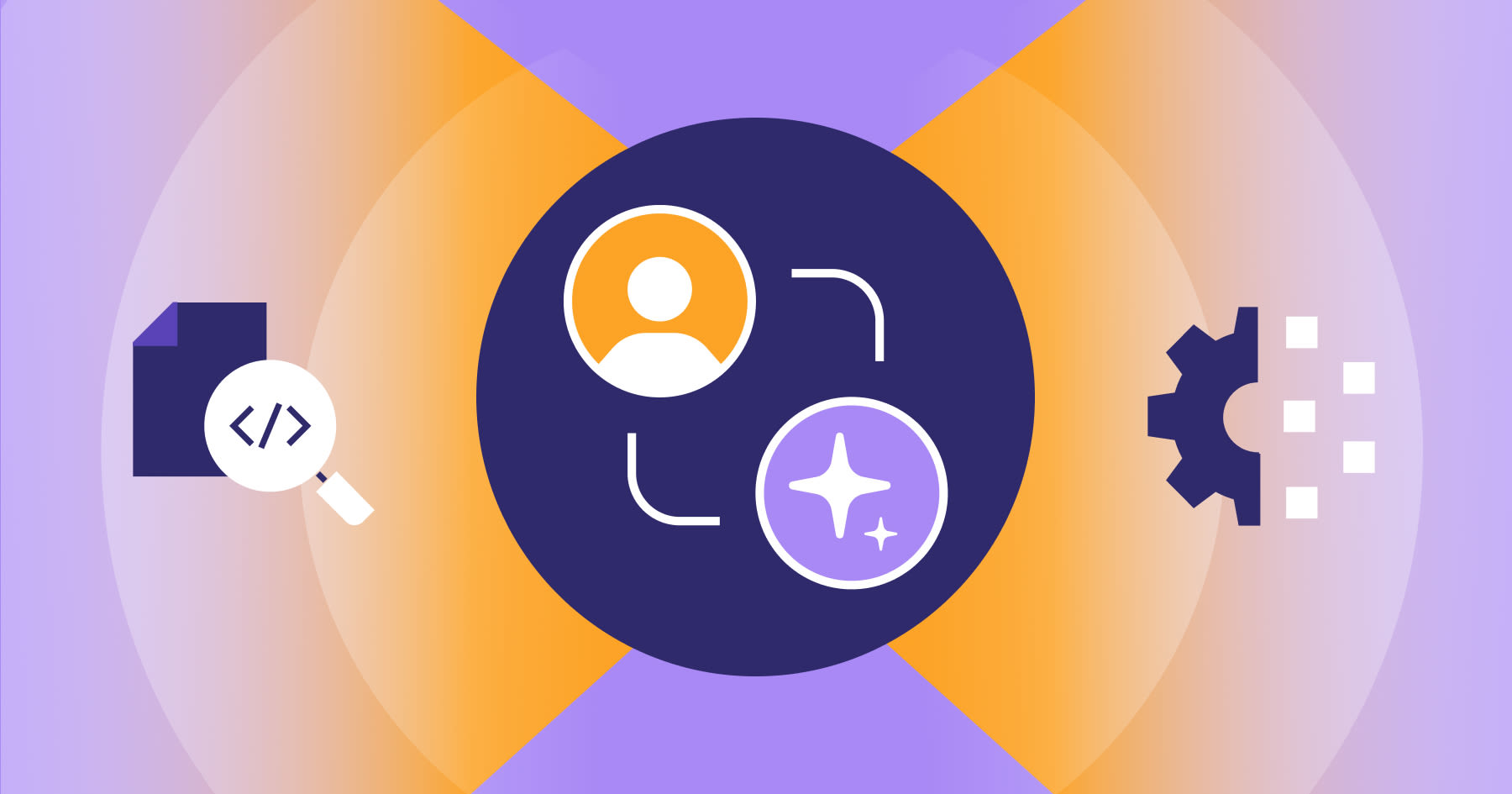A fundamental shift has occurred in my conversations with technology leaders at the world's largest banks. Six months ago, they asked about AI pilots. Today, they're asking how to orchestrate a fleet of AI agents to automate and manage their entire technology estate. The question has evolved from "Should we use AI?" to "How do we scale AI responsibly across tens of thousands of developers and millions of lines of code?"
A convergence of pressures is driving these shifts: competitors moving faster, regulatory requirements growing more complex, and the realization that individual AI coding assistants, while useful, aren't enough to transform how banks build and maintain software.
The reality of banking technology today
Banks operate some of the most sophisticated technology infrastructures on the planet, yet their developers spend less than a quarter of their time actually writing new code. Individual AI coding assistants have helped improve productivity, but they don't address the fundamental challenge: banks need to automate and orchestrate work across entire teams and systems, not just make individual developers produce more code faster.
The pattern is consistent across banking technology organizations: a new regulation or audit finding presents a gap, leading to the adoption of a specialized tool to address that specific area. This cycle repeats with each compliance requirement, each audit finding, each new risk adding another tool to the stack. After years of this reactive approach, banks operate with numerous different systems for source control, CI/CD pipelines, security scanning, compliance checking, and deployment, with minimal integration between them.
This fragmentation creates a fundamental barrier to AI transformation. Even when banks implement AI in individual tools, they end up with disconnected pockets of automation. The AI in a code editor can't coordinate with security scanners, which can't communicate with deployment systems. This prevents banks from executing the complex, multi-step workflows that would truly transform their operations.
While 69% of financial services executives believe the optimal human-AI partnership should be 50/50, the reality is that humans still handle three-quarters of the work. The gap isn't about technology capability; it's about having the right platform to deploy that capability at scale.
How agent platforms are different
The shift from AI assistants to agent platforms represents a fundamental change in how banks can leverage AI. It's the difference between giving each developer a better tool and transforming how entire organizations deliver software.
Consider what I'm seeing in practice:
A top commercial bank is achieving rapid growth through platform consolidation and AI orchestration. By establishing a unified DevSecOps platform with built-in AI capabilities, they've created a golden path that enables intelligent automation and orchestrated workflows at scale. This single-platform approach, with dedicated infrastructure and enterprise-grade security, accelerates software innovation while maintaining complete control over their data and processes.
A leading digital financial services provider has implemented agentic chat capabilities that surface vulnerabilities at the time of code writing and autonomously update code to address SAST scan findings and dependency issues. Their unified platform approach integrates AI across the entire software development lifecycle—from code creation through deployment—with built-in governance controls and human oversight at critical decision points. By consolidating previously siloed tools into a single AI-powered platform, they've eliminated toolchain complexity while enhancing security.
A global Fortune 500 bank is pioneering campaign-based automation across its entire firm using custom agents. While already equipped with various AI coding assistants, they have recognized that individual developer tools aren't enough. Their platform approach enables firm-wide orchestration that no single tool could achieve.
A top international bank transformed its delivery capabilities through a unified platform strategy that embeds AI across every stage of software development. Engineers now leverage AI-powered code suggestions, automated testing, security scanning, and deployment automation—all within a single platform that maintains enterprise security standards. This comprehensive approach brings measurable value across the entire software value chain, from ideation to production, enabling rapid delivery of innovative financial services.
These aren't incremental improvements. They're fundamental transformations in how banks operate.
What about security and governance?
Every banking technology leader I speak with shares the same concern: How do we scale AI while maintaining the security and governance our regulators demand? Our research validates this concern: 58% of financial services executives cite cybersecurity as their primary worry about agentic AI, while 54% are concerned about data privacy.
This is where comprehensive agent platforms become essential. Unlike consumer AI tools or individual coding assistants, enterprise agent platforms can be built with banking requirements in mind: audit trails for every action, role-based access controls, regulatory-aligned governance frameworks, and the ability to operate entirely within the bank's security perimeter. It is important for banks and financial institutions to prioritize critical features like PII data masking to automatically detect and redact sensitive information before it reaches AI models, and "break the glass" emergency access protocols for urgent situations.
In practice, 58% of financial institutions are already implementing regulatory-aligned governance frameworks, and 56% have established AI ethics committees. The platform approach aligns with these governance structures, providing centralized control and visibility that scattered AI tools simply cannot offer.
The human factor remains critical
Despite the AI revolution, our research reveals that 99% of financial services executives say human contributions remain valuable for software development. The most valued human contributions are no longer writing routine code but strategic vision (43%) and creativity (42%). Developers are becoming orchestrators: defining what needs to be built, ensuring it meets business requirements, and guiding AI agents through complex problem-solving.
This shift requires significant investment in upskilling. An overwhelming 94% of executives say financial services organizations should prioritize training employees to work alongside agentic AI.
From pilot to platform: The execution strategy
Ted Ranft, AVP financial services at GitLab, has identified a clear pattern among banks successfully scaling AI. "The banks that make the most forward progress with AI aren't the ones with the biggest budgets or the most developers. They are the ones that understand how siloed their DevSecOps toolchains have become over time. When financial services leaders approach AI as an interconnected platform play rather than a collection of tools, they unlock possibilities that simply don't exist with point solutions."
The financial institutions that will define the next era of banking aren't waiting for perfect solutions. They're moving now, with clear strategies:
Start with high-impact, low-risk workflows: Pipeline migrations, automated testing, and dependency updates provide immediate value with minimal risk.
Build governance in parallel: Don't wait to establish AI governance frameworks. The 95% of executives who have board buy-in got there by demonstrating control alongside capability.
Invest in your people: The 53% revenue increase and 55% productivity boost from AI come from people who know how to leverage it effectively.
Think platform, not point solutions: With over 9 in 10 financial services executives agreeing that they will need to lead with software innovation to stay ahead in the next 18 months, a platform is no longer optional — it's a requirement for success.
The competitive reality
With 93% of financial services executives expecting agentic AI to become the industry standard within three years, banks are racing to move from experimentation to scale.
The $762 billion global opportunity represents banks innovating at unprecedented speed while maintaining bank grade security and reliability. When you can orchestrate thousands of agents across your technology estate, you tackle technical debt that seemed insurmountable and modernize systems once too complex to touch.
Most importantly, you free your human talent to focus on what humans do best: envision the future, solve complex problems, and create value for customers. The institutions moving to agent platforms today are creating the future of banking.
Next steps
The enterprise guide to agentic AI
Discover how agentic AI revolutionizes enterprise software development. Learn to achieve 10x productivity gains while reducing costs and security risks.
Read the guideDiscover how agentic AI revolutionizes enterprise software development. Learn to achieve 10x productivity gains while reducing costs and security risks.
Frequently asked questions
Key takeaways
- Banks using AI agent platforms see 55% productivity gains by orchestrating work across siloed DevSecOps toolchains, not just assisting individual developers.
- Enterprise platforms provide the security controls banks need: PII masking, break-glass protocols, and operation within existing security perimeters.
- Success requires investing in people alongside technology — 94% of executives prioritize training teams to orchestrate AI agents, not just use them.

